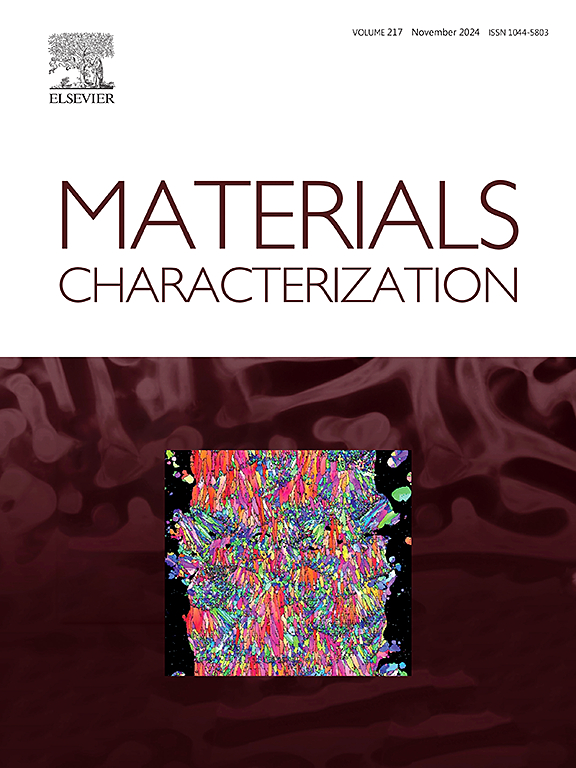采用新型闪光-摩擦复合焊接工艺改善U71Mn钢轨对接接头组织和力学性能的综合表征
IF 4.8
2区 材料科学
Q1 MATERIALS SCIENCE, CHARACTERIZATION & TESTING
引用次数: 0
摘要
提出了一种闪光-摩擦复合焊接(F-FHW)方法,将闪光对接焊(FBW)和线性摩擦焊(LFW)结合到一种专利焊接系统中,实现了U71Mn重轨钢的坚固对接焊接,改善了焊接接头的组织结构,提高了焊接接头的力学性能。在F-FHW中,在闪光对接焊接过程中引入特定的摩擦振动,以减少焊接热输入,同时增强软化塑化材料在焊接区域的运动。振动和材料塑性流动的增强共同抑制了接头中铁素体软化层的形成,细化了珠光体组织,抑制了接头焊缝金属区的渗碳体球化。从而使焊接区乃至整个焊接接头的硬度、抗拉强度和塑性等力学性能得到了很大的提高。值得注意的是,与FBW接头相比,F-FHW接头的抗拉强度提高了15%,伸长率显著提高了约5倍。断裂发生在F-FHW接头的热影响区,而不是焊缝金属区,断裂呈现韧性-脆性混合模式。本文章由计算机程序翻译,如有差异,请以英文原文为准。
A comprehensive characterization of improved microstructure and enhanced mechanical properties of butt joints of rail U71Mn steel welded by a novel flash-friction hybrid welding process
A novel flash-friction hybrid welding (F-FHW) method combining flash butt welding (FBW) and linear friction welding (LFW) incorporated into a patented welding system was developed to realize robust butt welding of heavy rail U71Mn steel with improved microstructures and superior mechanical properties of welded joints. In the F-FHW, a specific friction vibration is introduced in the flash butt welding process to reduce welding heat input, while enhancing the movement of softened plasticized material in the welding region. Both of the vibration and the enhanced plastic flow of material work together to suppress the formation of the ferrite softening layer in the joint, refine the pearlitic structure and inhibit cementite spheroidization in the weld metal zone of the joint. Consequently, the mechanical properties including hardness, tensile strength and ductility of the welding zone and even the whole welded joint have been greatly improved. Remarkably, F-FHW joints show an increase by 15 % in tensile strength and dramatically improved elongation about five times higher, compared with FBW joints. Fracture takes place in the heat affected zone of the F-FHW joint instead of the weld metal zone with a mixed ductile-brittle mode.
求助全文
通过发布文献求助,成功后即可免费获取论文全文。
去求助
来源期刊

Materials Characterization
工程技术-材料科学:表征与测试
CiteScore
7.60
自引率
8.50%
发文量
746
审稿时长
36 days
期刊介绍:
Materials Characterization features original articles and state-of-the-art reviews on theoretical and practical aspects of the structure and behaviour of materials.
The Journal focuses on all characterization techniques, including all forms of microscopy (light, electron, acoustic, etc.,) and analysis (especially microanalysis and surface analytical techniques). Developments in both this wide range of techniques and their application to the quantification of the microstructure of materials are essential facets of the Journal.
The Journal provides the Materials Scientist/Engineer with up-to-date information on many types of materials with an underlying theme of explaining the behavior of materials using novel approaches. Materials covered by the journal include:
Metals & Alloys
Ceramics
Nanomaterials
Biomedical materials
Optical materials
Composites
Natural Materials.
 求助内容:
求助内容: 应助结果提醒方式:
应助结果提醒方式:


